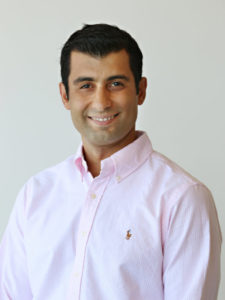
In order to achieve the United States climate goals of zero greenhouse gas emissions by 2050, and a carbon-free power grid by 2035, a massive expansion of our current transmission infrastructure is required to handle the vast amount of wind and solar power needed. Thousands of miles of new power lines would need to be built throughout the country to meet this goal.
Electrical and computer engineering assistant professor Mostafa Sahraei-Ardakani intends to substantially reduce this need by implementing flexible transmission technologies to improve the transfer capability of existing transmission networks in his project, CAREER: Deregulated Market for Flexible Transmission. Flexible transmission technologies not only increase the capacity of existing transmission networks, improve reliability and enable effective integration of renewable generation, but they are also widely available mature technologies. Despite the availability of these technologies, we have yet to see their widespread adoption because current market designs lack the economic incentive necessary for their implementation.
How electricity is purchased and sold in the United States varies by the country’s region. While many cities today function in a deregulated market, allowing consumers to choose their electric supplier based on competitive prices, some areas still rely on traditionally regulated markets in which customers only have the option to buy from a single provider. Despite the introduction of market mechanisms in wholesale and retail electricity sales, power transmission has maintained its status as a regulated monopoly industry. These regions operate as a monopoly in their territories, requiring state regulators to oversee how electric utilities set electricity prices to keep rates reasonable for customers.
Monopolies are still generally considered harmful to consumers and the economy because consumers bear the weight of risk, and innovation and quality, are often stifled. These markets can also create extensive regulatory hurdles, significantly increasing the time needed to complete a transmission project and have caused a lack of investment in transmission systems.
Sahraei-Ardakani will address these challenges by generating new theories and methods for the development of modern markets that enable deregulated and market-based operation of flexible transmission assets, as opposed to the current regulated structure. By implementing new incentives, enhanced utilization of the existing grid, and innovations will be possible, making the nation’s power grid more modern, flexible, resilient, and economical.
Sahraei-Ardakani’s lab will investigate multiple market designs throughout the project that they will rigorously test to ensure their efficiency and compatibility with existing electricity markets. They will also study each design’s potential for exploitation and will create regulatory guidelines to prevent market manipulation based on their findings.
“My hope is to develop a formulation for an efficient market within the first three years of the project that we can then begin implementing on larger real-world networks. In doing so, we will be able to demonstrate to utilities and system operators that this is something possible to implement.”
The project incorporates engineering and economics principles to ensure proper power flow, improved social welfare and adequate market revenue. By avoiding new transmission project costs, Sahraei-Ardakani and his team will substantially increase the nation’s savings and the efficiency of its electric power infrastructure and provide an economical pathway to the adoption of increased renewable generation.
“I received my Ph.D. in Energy Policy, so I am quite interested in economic and policy problems related to the electric power grid. I’m always looking for opportunities to incorporate these concepts into my engineering research and demonstrate to students the importance of considering the economic aspects of the engineering problems they address. This project is a perfect way for me to do that,” Sahraei-Ardakani said.
Visit Sahraei-Ardakani lab for additional information about the project and to explore more of his work.